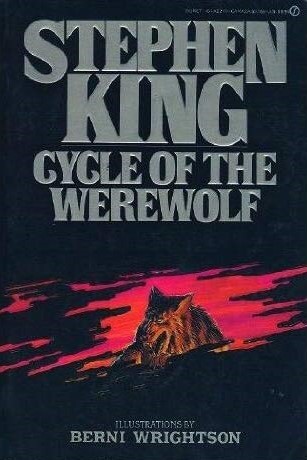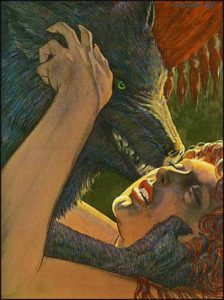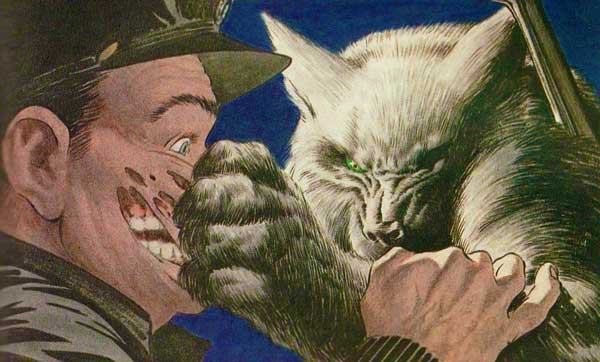 By STEPHEN KING, BERNI WRIGHTSON (Signet; 1983/85)
By STEPHEN KING, BERNI WRIGHTSON (Signet; 1983/85)
This Stephen King “novel” is actually a graphic album whose illustrator Berni Wrightson deserves equal credit. CYCLE OF THE WEREWOLF was conceived as a calendar for the year 1984, with a story by King and copious illustrations by Wrightson to fill out each month. It initially appeared as a limited edition hardcover in late 1983, followed by a trade paperback incarnation in ‘85 (and a bad movie adaptation that same year)
CYCLE OF THE WEREWOLF was conceived as a calendar for the year 1984…
As a story I feel it’s one of King’s stronger efforts, with his conceptual genius complimented by pointed prose and a short, sweet narrative–a welcome change from his standard fare, which tends toward the overwrought and overwritten. Wrightson’s artwork, on the other hand, is everything we’ve come to expect from this wizardly talent: bold, colorful and flawlessly rendered, not to mention quite gruesome in spots.
The idea of a werewolf-themed calendar is appropriate, as the werewolf myth is based on lunar cycles. King admits in an afterward that he cheated with the year’s actual full moons—having them fall on Valentine’s Day, the 4th of July and New Year’s Eve—but otherwise the idea of relating his tale in short bursts set on the night of each month’s full moon works beautifully.
As a story I feel it’s one of King’s stronger efforts, with his conceptual genius complimented by pointed prose and a short, sweet narrative

The setting is the small Oregon town of Tarker Mills, where every month one or more people are brutally killed by a werewolf. We find out just who the werewolf is late in the story, although its identity isn’t especially important. Far more pertinent is the hero of the tale, a plucky wheelchair bound kid named Marty. Marty isn’t introduced until the July entry, but becomes vitally important to the story. He’s royally pissed that the July 4th fireworks are called off due to the killings, and (despite his condition) isn’t about to take this outrage sitting down! The story, then, gradually shifts from a collection of gory set pieces to a suspenseful boy-werewolf showdown, which naturally takes place on New Year’s Eve of the following year.
…the illustrations are to die for.
This book has been criticized by some King aficionados as being overly short and/or slight. I’d say it’s just the right length, especially considering that my main complaint with most of King’s fiction is that it’s too damn long—plus the illustrations are to die for. Fact: with Stephen King and Berni Wrightson working together at the top of their respective games, it simply doesn’t get much better.

